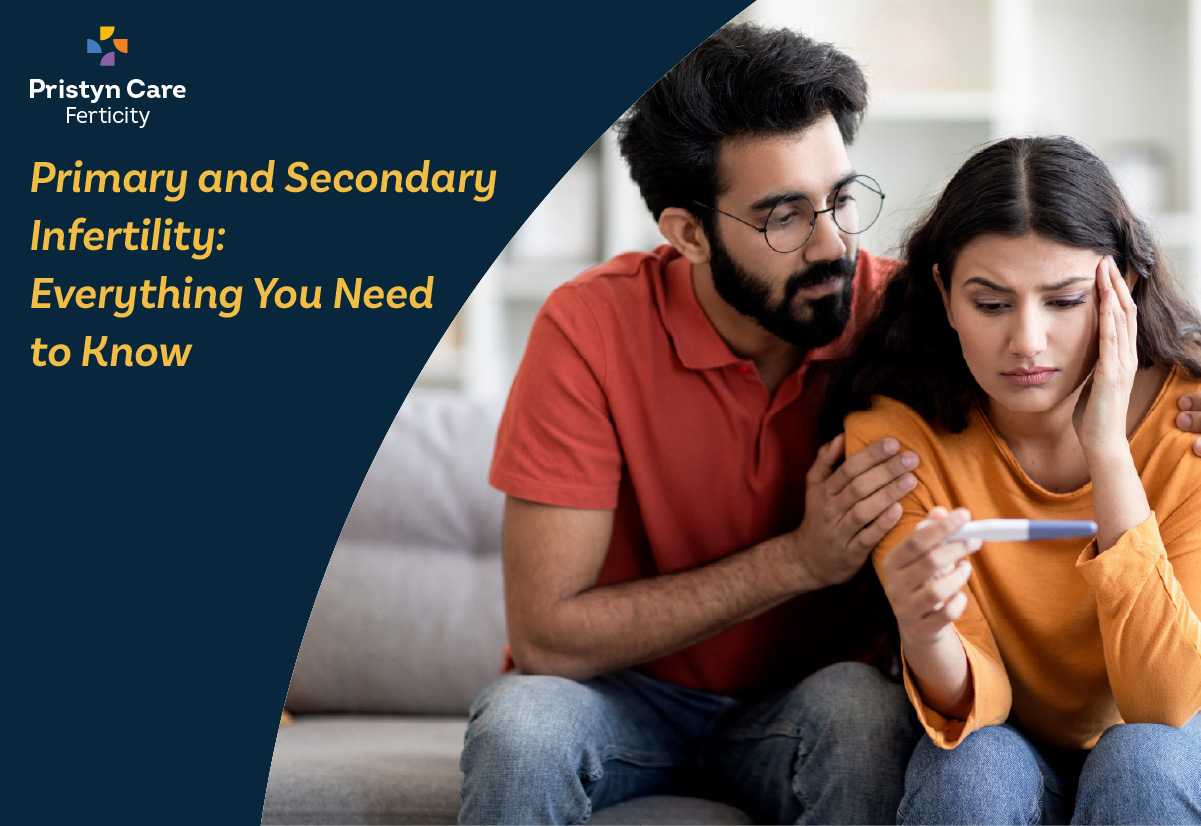While dealing with infertility, we often come across terminologies like primary or secondary infertility, what are these?
Why is it important to understand them?
This is important to understand because the causes, risk factors, treatment and success of treatment vary with the type of infertility.
So, broadly speaking, there are two types of infertility and often people misunderstand the difference between them.
Ask yourself one clear question – have you been pregnant before? If yes, then you may be going through secondary infertility
Secondary infertility is a condition in which the couple had one or more pregnancies earlier, but now they are unable to conceive.
Whereas, if you’re trying to conceive for the first time and are unable to do so then this is a primary infertility.
Knowing these diagnostic differences helps identify fertility issues. It also guides the right treatment to improve your chances of conception.
Who does it affect?
Primary infertility is more common in couples who started recently married or started trying recently, whereas secondary infertility occurs in those who have had earlier pregnancies. However, both types of infertility can impact individuals of any age, gender, or relationship status.
Primary infertility vs secondary infertility
| Factors | Primary infertility | Secondary infertility |
| Basic difference | when couples are not able to conceive after successful intercourse for a sufficient amount of time |
when couples have difficulty in conceiving after having one or more previous pregnancies |
| Common causes/reasons | more common associations are Hormonal imbalances, ovulation issues, poor sperm quality, reproductive system disorders, and sexual disorders | more common associations are Age-related decline in fertility, complications from earlier pregnancies, lifestyle factors, underlying health conditions |
| Emotional impact | Being disappointed, anxious, and uncertain about being able to conceive | Being confused and frustrated, all the more if previous pregnancies were natural |
| Treatment options | Ovulation stimulating medicines, hormone therapy, IVF/IUI, surgical treatments for reproductive problems | Treatment for underlying health problems, fertility medicines, Managing age-related fertility decline, lifestyle changes, IVF/IUI |
Clearly, the treatment for primary and secondary infertility is almost the same. Whether it’s IUI, IVF, donor conception, or surrogacy, the approach doesn’t change much.
Is infertility different from sterility?
It is a common misconception that infertility and sterility are the same. However, they differ a lot. Being infertile means that a female finds it more difficult to conceive even after trying, whereas being sterile implies that conception is impossible due to medical reasons.
In most cases, struggles around fertility don’t indicate total sterility. Many couples going through infertility can get pregnant with the right treatment. Several factors such as age, quality of egg and sperm, and overall reproductive well-being also determine the success rate.
If a woman isn’t conceiving as expected, getting a fertility assessment offers clarity. Fertility tests are a safe and effective way to identify potential issues. Having a proactive approach is the right way to make well-informed decisions.
Be active and responsible for your health.
If it has been taking more time than normal to conceive naturally, it’s always suggested to get your fertility assessment done. This lets you recognize the potential issues without delay.
Fertility tests give you the much-needed clarity, so you can speak to a fertility specialist to take the right steps ahead.
Some common tests for primary and secondary infertility include these:
- Ovulation monitoring to keep track of menstrual cycles.
- Semen analysis to assess sperm count and motility.
- Hormone testing for checking reproductive hormone levels.
- Ultrasound scans to check for reproductive abnormalities.
Being responsible for your health and taking expert guidance, makes it easier to get rid of infertility and conceive successfully. It’s all about the right help at the right time and keeping away the unnecessary stress.
Be it primary or secondary infertility, it can be hard at times to try endlessly for a pregnancy. Fortunately, medical advancements and an array of treatment options have made it easier to welcome the joy of parenthood.
If you’ve been struggling with infertility in silence, now is the time to vocalize your problem and get the right professional help. Reach out to us at Ferticity IVF & Fertility Clinics and book your consultation. Fertility doctors and the team at our IVF center in Delhi are highly experienced and skilled and have helped several individuals and couples get rid of infertility. Take that life-changing decision today!
Also Read :Surrogacy Process : A Step by Step Guide to Building Your Family

